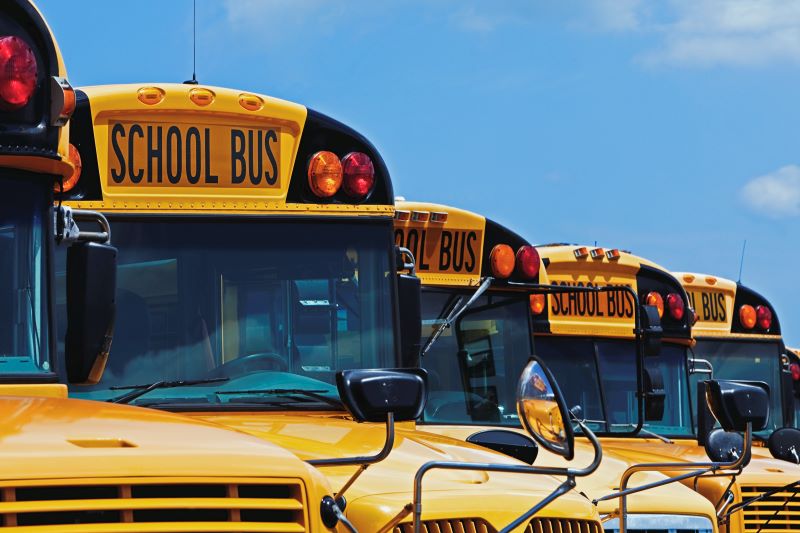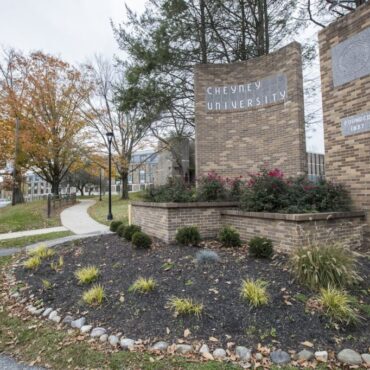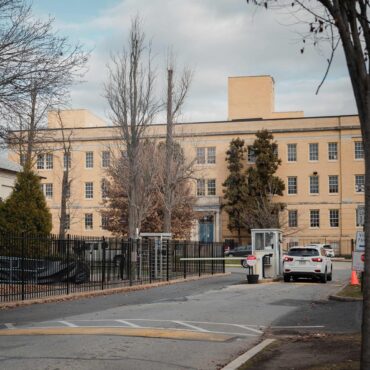-
play_arrow
WURD Radio
A flood of money is coming to local schools: How should they spend it?

By Avi Wolfman-Arent | WHYY.org
For Pennsylvania schools, the flood is coming.
In this case, it’s the good kind of flood — a flood of money.
“Everybody overuses the word ‘unprecedented,’ but it really is an unprecedented amount of federal funding coming to schools in a really short amount of time,” said Hannah Barrick, assistant executive director of the Pennsylvania Association of School Business Officials (PASBO).
Barrick’s referring to the new federal stimulus bill, which — when signed, as expected, by President Joe Biden — will steer about $125 billion to school districts and charter schools.
That money will likely come with a deadline attached: Sept. 30, 2023.
While navigating a health and educational crisis, school leaders will have two-and-a-half years to decide how they spend a once-in-a-generation influx of cash.
It’s a far better problem to have than the slash-and-burn cuts many feared when COVID-19 first struck and the economy went into lockdown.
Still, it’s a problem — or perhaps, a puzzle.
How do you spend lots of money, quickly, in a way that helps the students harmed most by the pandemic’s seismic disruption to formal schooling, but also creates recurring benefits?
“You have to use one-time money intelligently, and — as much as possible — use one-time money for short-term expenses with long-term impact” said Uri Monson, Chief Financial Officer of the School District of Philadelphia, Pennsylvania’s largest school district.
The money wave
The exact amount of money each district can expect is unclear.
Monson believes, based on the latest estimates, the School District of Philadelphia will receive “north of a billion” dollars.
The Senate version of the stimulus bill puts $123 billion in an emergency relief fund for K-12 schools that will “remain available through Sept. 30, 2023.” That’s more than twice as much as the $54 million that Congress earmarked for school relief in the December stimulus package — which was in turn more than four times as much the federal government sent to schools in the CARES Act.
In the December stimulus, Pennsylvania received a little over $2 billion for school districts and charter schools. If a similar share goes to Pennsylvania this time around, it would mean about $5 billion for the state’s K-12 sector.
To put that into perspective, the state allocates a little under $7 billion for basic education funding each year.
Because of the way the federal money will be distributed, schools and districts serving more students in poverty will receive a greater share of the money on a per-pupil basis.
The stimulus bill is not particularly prescriptive. It does say that districts have to use at least a fifth of the money “to address learning loss,” although that guidance fairly broad. For the rest of the money, local officials will have even more discretion.
Still a health emergency
The first challenge facing school districts is still the pandemic, which has ongoing health and educational costs.
Dr. Anthony Fauci predicted that older students may have access to a vaccine before the next school year begins, but there’s no illusion that all students will enter the fall vaccinated.
That means districts will almost certainly implement safety measures that require personal protective equipment, testing, and technology. There’s even a possibility that districts will need more space — at least temporarily — to offer more in-person classes in an environment that enables social distancing.
“Unlike the last recession, there has been an actual increased cost to the operation of an educational program,” said Donna Cooper, executive director of the nonprofit Public Citizens for Children and Youth.
These costs are temporary, hopefully. But they are costs nonetheless.
As things progress toward normal, though, the conversations around how to spend billions of dollars in federal aid become more nuanced, difficult, and philosophical.
Now or later?
There is little doubt that millions of children got less out of school over the past twelve months than they normally would have.
Some have suffered socially and emotionally. Others have taken an academic hit.
Deciphering the magnitude of those gaps and the best way to fix them has become a central question for school administrators.
Already, in Philadelphia and elsewhere, there’s talk of expanded summer programs and after-school tutoring to help students recover lost ground.
Cooper believes schools should pour the vast majority of federal money into these kinds of stop-gap interventions — interventions aimed at helping the students harmed most over the last year.
She envisions districts hiring fleets of well-compensated, short-term contract workers that would act as classroom assistants, freeing up classroom instructors to work with students in small groups.
“You need a second adult in that room,” said Cooper. “You need a second trained person. So the first thing I’d be doing is hiring people this summer to be part of the education force.”
Perhaps, she says, these contract workers could become a pipeline for the next generation of fully certified teachers, replacing those who retire or leave a district. Either way, she thinks districts should focus on hiring people that can smooth the transition back to in-person school and help kids catch up on whatever they’ve missed.
“I think that there should be a first of a principle that says 60%, 70% of the money needs to be spent on remediating and supporting student learning and learning catch-up,” Cooper added. “We have to focus on the kids — have to, have to.”
In many ways, this violates the basic principle of stimulus spending.
Stimulus money is a one-time shot in the arm. People and programs are recurring costs.
Back in 2009 — the last time the federal government gave states a major round of stimulus money — Cooper was an aide to Pennsylvania Gov. Ed Rendell. She urged districts not to spend the money on recurring costs.
But she says this is a different kind of stimulus bill. In 2009, the money was a bridge for districts to buy time until the economy recovered. This money is to stanch an educational wound. It needs to be spent with urgency and in a way that reaches classrooms — so long as it comes with clear messages that the money will go away.
When the money stops
The stimulus money more or less guarantees that districts won’t have a major budget crisis in the next couple of years.
Even before this latest stimulus bill, the School District of Philadelphia expected to end the 2022-23 school year with a small fund balance before dipping back into the red. Those balances will be significantly larger now thanks to the federal government’s largesse.
Still, that red ink looms because the district — and many others around the state — faces rising pension, charter, and special education costs that outpace the regular revenues they receive.
That’s why there will naturally be a pull to use this money in a way that creates savings down the road.
The most obvious example is capital spending.
Philadelphia’s public schools have massive facilities needs. Chief Financial Officer Uri Monson points out that the district could use stimulus money to actually pay for repairs instead of taking on new debt to fix crumbling buildings
“If you used a portion of that money to get ahead or get back onto a normal replacement cycle of facilities, to repair facilities, to bring them up to where they should be, the long-term educational impacts of that are amazing,” said Monson
Better facilities could make for a healthier learning environment and a healthier financial outlook. And a healthier financial outlook could help districts avoid a kick-the-can scenario where the fall of 2023 looks a lot like the fiscal mess many feared for fall 2021.
“This is just going to be a really, really complex process,” said Barrick with PASBO. “ careful and thoughtful so they can get through this without creating another crisis on the other side.”
That said, Monson knows that the district’s first priority is to help the 120,000 students who just lived through a pandemic and need schools to support them on the road back to normalcy. Some students may arrive in classrooms next fall having not been in a school building for 18 months.
“I like having a balanced budget for five years, but that is not the mission of the school district,” said Monson.
A rare experiment
The money school districts receive from the federal government will require quick decisions — while also opening up rare possibilities.
Monson, for instance, sees an opportunity to give principals more discretionary funding to address the needs they see on the ground when students walk back into classrooms.
The money also opens a critical two-year window where districts like Philadelphia will have — at least in relative terms — the kind of funding they’ve rarely enjoyed. The “we-can’t-afford-that” cloud hanging over many districts, particularly Pennsylvania’s low-income urban districts, will temporarily thin.
To be clear, low-income districts in Pennsylvania have generally received less money to spend on their students for decades. That’s left layers of problems and a one-time infusion will not fix all of them.
But advocates and administrators hope this unusual stimulus provides a glimpse into another world — one where scarcity is not the ruling principle.
“We can prove to you now the difference between a learning environment where there’s enough teachers to each child compared to where there wasn’t,” said Cooper.
Original published on WHYY.org
THE WURD WEEKLY NEWSLETTER
Black Talk Media sent straight to your inbox.
BECOME A MEMBER
The forWURD Movement is your way to
protect and preserve Independent Black Media.
Written by: wurdradio21stg
Similar posts
Featured post
Latest posts

This week on WURD: Atlantic City mayor and spouse charged with assault, Mayor Parker’s first 100 days, chronic absenteeism across Philly schools

Celebrating environmental justice and activism: EcoWURD presents EcoFest on Saturday, April 20, from 1 to 5 p.m. at Belmont Mansion

This week on WURD: The legacy of O.J. Simpson, the Philly Muslim community mourns on Eid, advocacy for a greener Philadelphia

WURD Radio’s Tonya Pendleton to moderate student debt panel hosted by Vice President Kamala Harris on April 8

This week on WURD: Delco DEI director dismissed, Mississippi torture case, what you need to know about AI and more
Current show

The Source with the Black Women’s Leadership Council
The Source, hosted by a powerhouse lineup of leaders from the Philadelphia region, offers fresh perspectives on news, politics, finance, economic development, personal growth and healing.
closeUpcoming shows

GROUNDINGS with Brother Shomari
1:00 pm - 4:00 pm

Laborers
4:00 pm - 5:00 pm

Solutions On WURD
5:00 pm - 7:00 pm

The Envy McKee Show
7:00 pm - 10:00 pm

Freedom Sounds of Jazz
10:00 pm - 12:00 am
WURD Radio LLC © 2012-2021. All rights reserved.






Post comments (0)